Opinion: Failure to Renew SDG&E Franchise Would Put San Diego at Risk
San Diego Gas & Electric linemen understand risk.
San Diego Gas & Electric linemen understand risk.
The San Diego County Water Authority’s asset management team recently celebrated the completion of a comprehensive condition assessment of more than 27 miles of the agency’s oldest pipelines. The assessment was performed in record time over just 16 months.
The work was part of a package of rehabilitative efforts on a portion of the First Aqueduct, which includes Pipelines 1 and 2 in North San Diego County. Built in 1947 and 1952, the two pipelines deliver treated water to the region and were constructed using various materials, including reinforced concrete and steel.
As the pipelines were inspected, areas that required immediate attention were identified and repaired, thereby minimizing future disruptions to water service and impacts to the surrounding environment. Sections of the pipelines requiring future repairs were added to a list of upcoming projects prioritized by the risks and associated costs.
“The asset management team took advantage of scheduled pipeline shutdowns, and with careful coordination, assessment work was performed concurrently with other major rehabilitation efforts in the region,” said Martin Coghill, operations and maintenance manager at the Water Authority. “This innovative approach saved time and avoided unnecessary disruptions in service to our member agencies.”
Throughout the condition assessment process, Water Authority staff worked closely with staff from member agencies to coordinate work being performed in their service areas and any potential impacts. Proactive repairs are crucial to ensuring the reliability of the regional water supply.
In 2016, a search was conducted to find the best technologies to perform critical assessments to maintain the reliability of the pipelines. It resulted in a multi-technology, multi-contract approach.
The Water Authority partnered with multiple contractors to perform the complex work:

PICA uses cutting-edge Remote Field Technology to scan pipelines at a controlled speed with high accuracy. Photo: San Diego County Water Authority
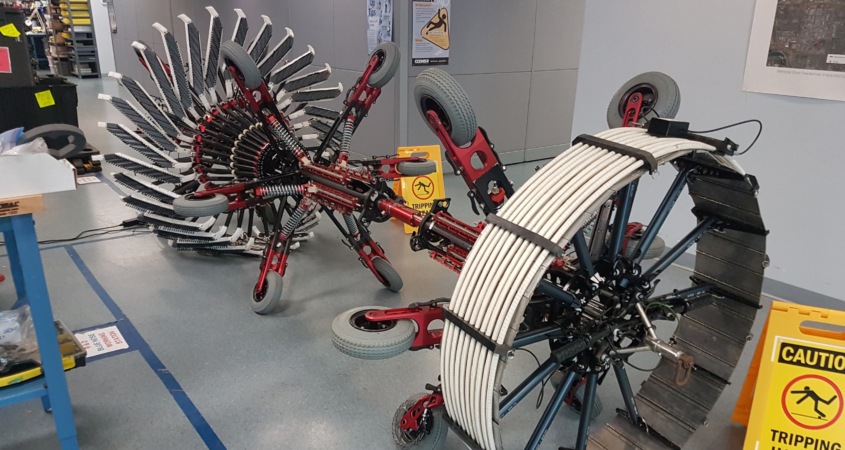
Pure Technologies’ innovative tool uses electromagnetic technology to assess reinforced concrete pipelines using personnel with rope and pulley support. Photo: San Diego County Water Authority
The focus on the Water Authority’s First Aqueduct is the latest chapter in the agency’s long-running strategy to assess critical pipelines and ensure the maximum lifespan is achieved with the most cost-effective methods. Proactive asset management efforts first began in the 1990s and were consolidated into the Asset Management Program in 2009. To date, more than 150 miles of the Water Authority’s total 310 miles of large-diameter pipelines have been assessed using cutting-edge technologies.
The asset management team collaborates with local, national and international organizations in the asset management and water infrastructure fields, focusing on knowledge sharing and asset life optimization.
Editor’s Note: This feature highlights water utility employees in the San Diego region working during the coronavirus pandemic to ensure a safe, reliable and plentiful water supply. The water industry is among the sectors that are classified as essential. LaMont Foster, Santa Fe Irrigation District Utility Worker I, is the Water Utility Hero of the Week.
Editor’s Note: This feature highlights water utility employees in the San Diego region working during the coronavirus pandemic to ensure a safe, reliable and plentiful water supply. The water industry is among the sectors that are classified as essential. LaMont Foster, Santa Fe Irrigation District Utility Worker I, is the Water Utility Hero of the Week.
I’ve had a few careers before working here at Santa Fe. After being laid off from a job I was at for more than 20 years, I was working as a bus driver for a school district. Someone had mentioned the water and wastewater internship managed by the San Diego County Water Authority. I applied and was accepted and worked with some great people at Otay and Helix and transitioned to a full-time job at SFID. I really enjoy working in the water industry. Water puts everyone on the same level. We all need it, and we all appreciate it even more when there is a problem getting it.
We used to drive around in crews of two together, but we drive separately now. We are also moving around the building a little differently and changing reporting times so there are fewer people in one place at a time, but other than that, the work is the same. We respond to customer concerns, fix what needs to be fixed and keep our maintenance schedule.
I’ve got some high-risk people in my family, so I am doing what I can to limit my exposure to people and going places. Just me and the family at the house and I am always sure to mask up. It’s important.
My life isn’t all that much different, but I really look forward to taking my wife and son out for a nice meal and enjoying ourselves. Not be worried or anxious about the people around me. I am really looking forward to that.
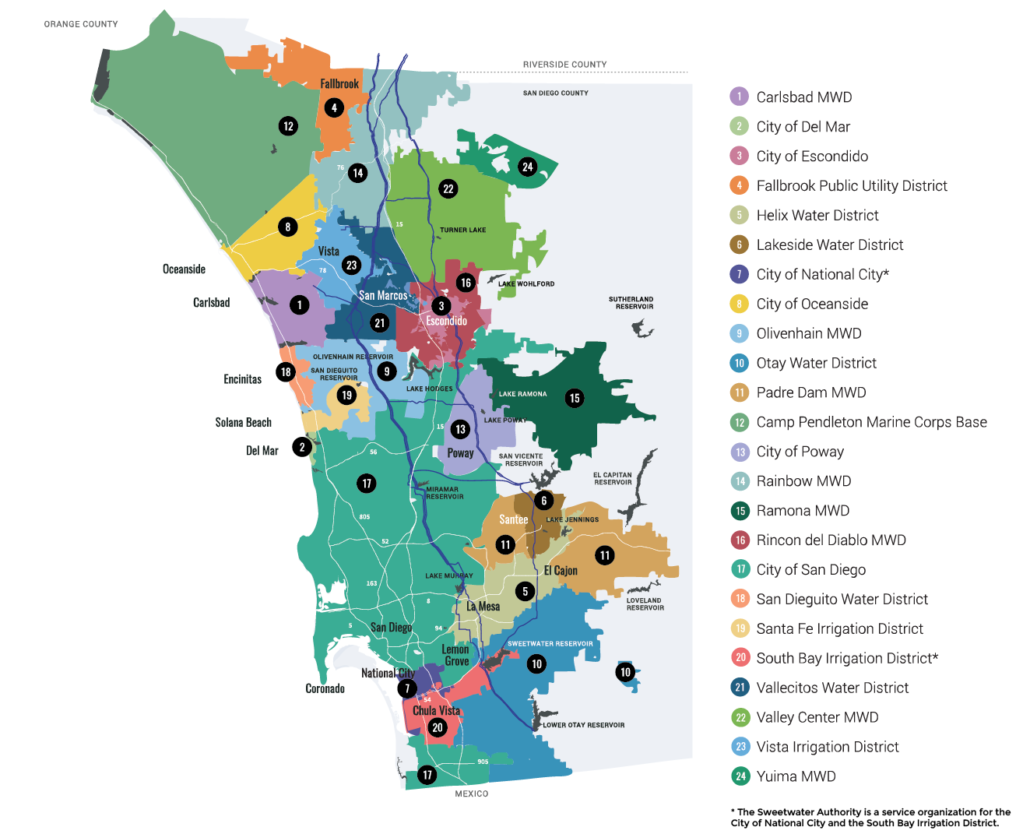
Editor’s Note: This feature highlights water utility employees in the San Diego region working during the corona virus pandemic to ensure a safe, reliable and plentiful water supply. The water industry is among the sectors that are classified as essential. Carrie Selby, City of Escondido Wastewater Treatment Plant Operator, is the Water Utility Hero of the Week.
In its efforts to maintain its critical infrastructure, the Vallecitos Water District undertook a challenging update to a wastewater system pipeline constrained by its precarious location.
The existing eight-inch gravity sewer pipeline conveys wastewater from the intersection of Rock Springs Road and Bennett Avenue west through a greenbelt area to an existing 12-inch pipeline in Rock Springs Road at Lancer Park Avenue. To expand capacity for current and future growth, it was replaced with a new 15-inch PVC pipe west of Matthew Lane and a 12-inch PVC pipe north and east of Matthew Lane.
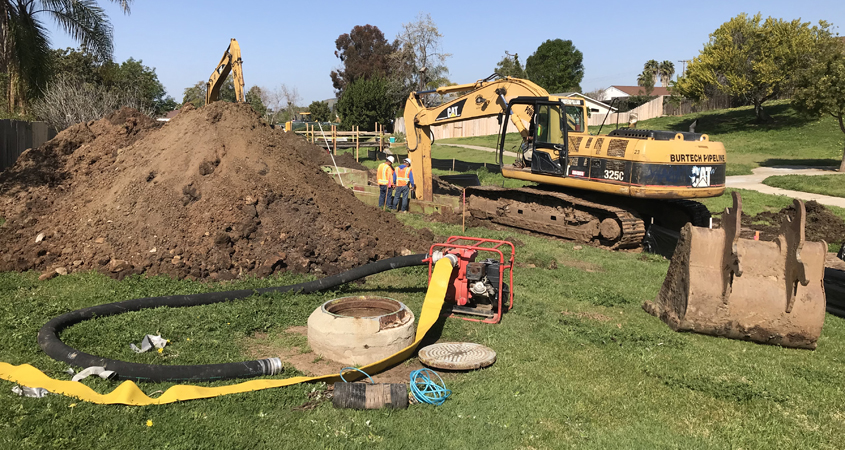
The location of the affected manhole put equipment and crews close to a SDG&E gas line inside a greenbelt park area. Photo: Vallecitos Water District
The District always prefers to perform work in a street or public right-of-way. Neither were possible for this project due to its greenbelt and park location within feet of residential homes.
“We took every environmental precaution prior to construction,” said Lito Santos, Vallecitos Water District Project Engineer. “We performed a nesting survey, a raptor survey, and we also worked to tunnel under the bridge,” within the Environmental Protection Agency’s “Clear Water Rule.”
San Marcos Woods Homeowners Association board member Ross Fisher acted as a liaison between homeowners and the HOA with the District. Fisher expressed concern about access to the work area by the District’s large combination truck. The original proposal to create a concrete strip to drive over wasn’t feasible.
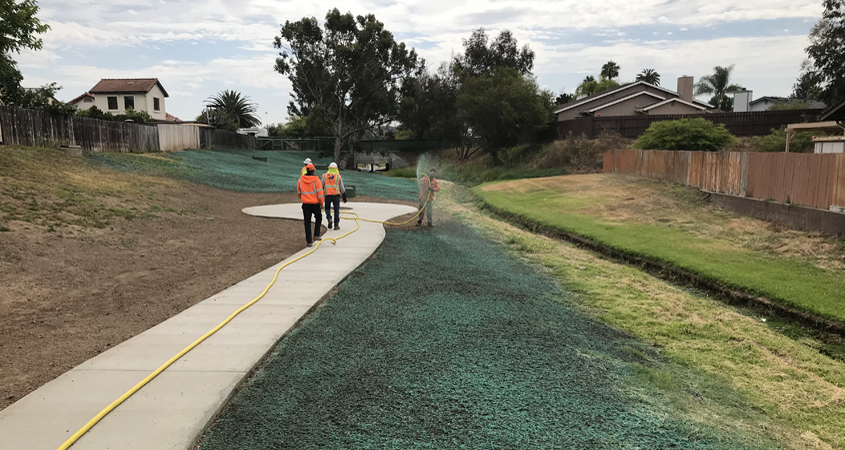
Due to its incredible strength, the grass-crete and existing lawns can handle the weight of a large service vehicle driving on it without significant damage. Photo: Vallecitos Water District
Working together with Vallecitos Water District engineers, the group chose an alternative material called “grass-crete.” Grass-crete is a green porous paving solution that comes in easy-to-install rolls. It’s flexible, lightweight, durable and provides design versatility to the project. Due to its incredible strength, the grass-crete and existing lawns can handle the weight of a large service vehicle driving on it without significant damage.
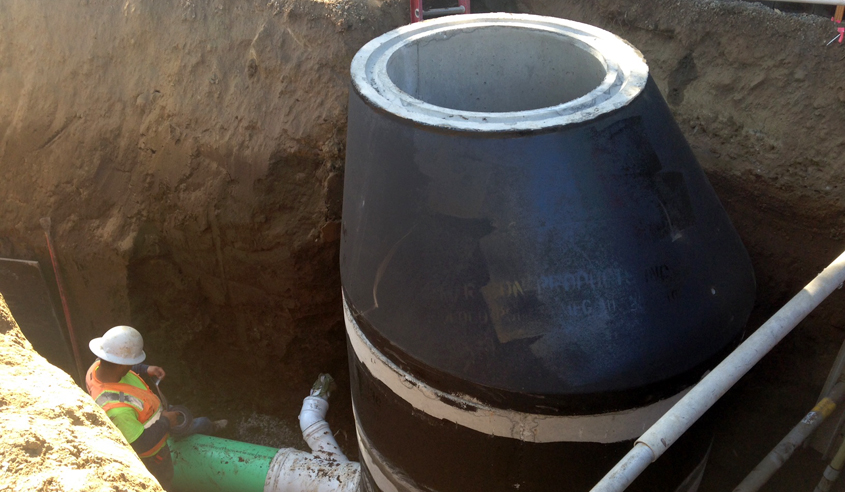
Manholes were waterproofed, coated, and sealed as an additional precaution and to extend their longevity. Photo: Vallecitos Water District
Vallecitos Water District engineers also worked with San Diego Gas & Electric to perform its work with enough safety clearance from a 16-inch transmission main artery gas line pressurized at 800 pounds per square inch. The District secured permission to dig within two to three feet from the line instead of the standard five feet.
The work area is also prone to flooding after large rain events, raising the water levels in the nearby creek high enough to infiltrate and inflow into the manholes. The District moved the manholes clear of the creek embankment, and lifted the manholes two feet above ground and clear of the flood plain to prevent runoff intrusion. Manholes were waterproofed, coated, and sealed as an additional precaution and to extend their longevity.
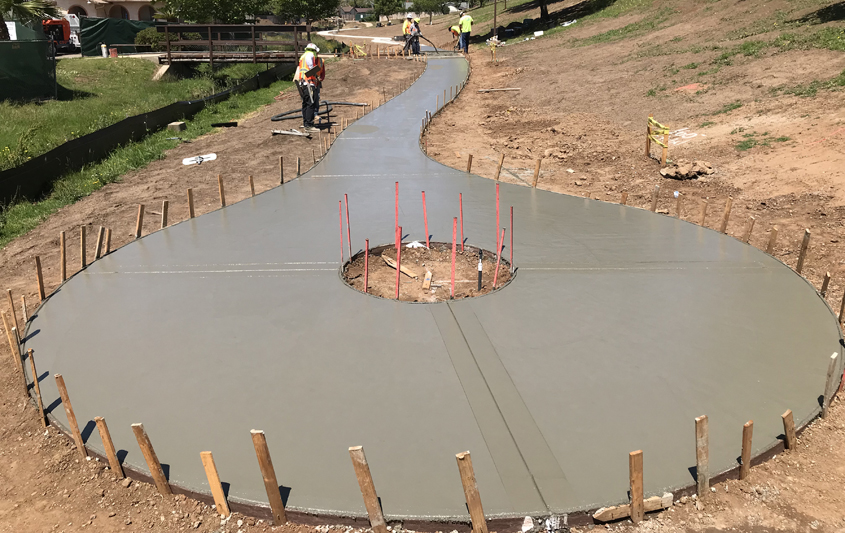
The District moved the manholes clear of the creek embankment, and lifted the manholes two feet above ground and clear of the flood plain to prevent runoff intrusion. Photo: Vallecitos Water District
“Overall Vallecitos left the greenbelt area as good or better when they started,” said Fisher of the HOA. “On a scale of one to ten, I have to give them a 9.5 or a ten. Working with the inspectors and Lito Santos the engineer, everything we asked for was done in a timely manner.”
“The project was a huge success,” said Santos. “Working with the Vallecitos Engineering Team, the Inspection Team and Mr. Fischer, it was not just a Vallecitos highlight but a career highlight.”
This feature highlights water utility employees in the San Diego region working during the coronavirus pandemic to ensure a safe, reliable and plentiful water supply. The water industry is among the sectors that are classified as essential. Carrie Selby, City of Escondido Wastewater Treatment Plant Operator, is the Water Utility Hero of the Week.
Editor’s Note: This feature highlights water utility employees in the San Diego region working during the coronavirus pandemic to ensure a safe, reliable and plentiful water supply. The water industry is among the sectors that are classified as essential. Carrie Selby, City of Escondido Wastewater Treatment Plant Operator, is the Water Utility Hero of the Week.
I worked security at Lake Skinner for MWD in 2002, and very much wanted to advance my career but was not sure how. Until, I came across a flyer for an operator position. This interested me, so I asked one of the operators who worked there, how to get into the field. He provided me some materials and this immediately peaked my interest. I ended up applying at another agency and was hired as an Operator-In-Training. Eighteen years later, I am still in the field and currently hold a Grade 3 Certification.
Although we regularly practiced extremely good hygiene at the plant. We now have taken extra precautions such as, wearing facemasks, and maintaining social distancing. Temperature stations are now our new norm. We have to take our temperature prior to starting our shift.
I come to work in proper attire and practice extra sanitizing precautions. I always make sure to change out of anything that I wear at work prior to going home.
I am looking forward to getting back to traveling and adventuring out to some hiking trails. Nature is fuel to my soul! I also look forward to spending time with family.

This feature highlights water utility employees in the San Diego region working during the coronavirus pandemic to ensure a safe, reliable and plentiful water supply. The water industry is among the sectors that are classified as essential. Ron Lutge, City of Oceanside Chief Plant Operator, is the Water Utility Hero of the Week.
Editor’s Note: This feature highlights water utility employees in the San Diego region working during the coronavirus pandemic to ensure a safe, reliable and plentiful water supply. The water industry is among the sectors that are classified as essential. Ron Lutge, City of Oceanside Chief Plant Operator, is the Water Utility Hero of the Week.
I became interested in the water industry in a round-about way. After leaving the military, I found it difficult to find work that was both mentally stimulating and challenging. I was looking for something that would allow me to work at an operational tempo I was used to. I definitely wasn’t looking for anything easy or slowed paced. At the time I was working at the General Electric aircraft engine overhaul facility in Ontario. Unfortunately, that industry proved to be unstable and did not offer a promising career. While searching for something new, I found Oceanside had a couple of openings for office workers. Since I had some experience working with spreadsheets and databases, I was offered a position in the water department. I figured this would keep me employed while I looked for something different. I soon discovered there were many disciplines within the water industry. I soon began researching career options in the water industry. Inspiration came from the supervisor I was working for at the time. I sat down with him and asked what were the requirements necessary to become an operator. I also received encouragement from the operators I came in contact with on a daily basis. That’s all it took. After that, I hit the ground running and have never looked back. The water profession is honorable, rewarding, and has offered me everything I have been looking for in a career – just like the military – another opportunity to continue being of service to others. And isn’t that what we as water professionals are here for – to be of service?
My personal day-to-day routine hasn’t really changed; I’m always busy. However, given the current health crisis we are all in, it has made me keenly aware of just how important it is to ensure our team is being taken care of, staying safe and healthy, and doing everything we can to ensure our facility stays operational to provide water to the residents of Oceanside without interruption. Because we operate our facility 24 hours a day, coupled with having a very small staff, we cannot work from home or implement rotating or staggered shifts. Everyone has to be ready, prepared, and available to work.
By following the guidance recommended by health officials to limit exposure in public, at work and home: social distancing, face coverings, sanitizing, washing hands, etc. By practicing these simple protocols we keep each other safe and minimize ourselves or others getting sick.
A return to some semblance of normalcy – whatever that may be.

